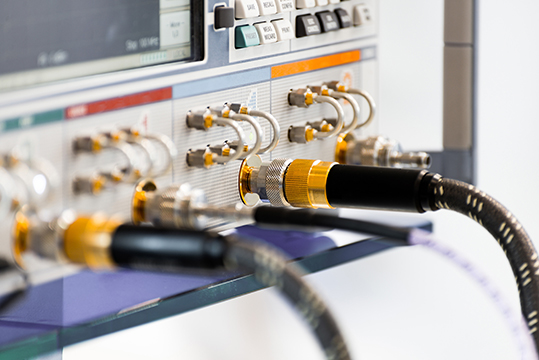
Posted to News on 3rd Oct 2022, 13:30
Choosing the right connector for manufacturing applications

In a manufacturing environment, choosing the wrong connector product can have serious consequences in terms of performance and safety. Scott Jones, general manager of Northern Connectors, outlines some of the things you should think about when selecting parts for a particular application, with suggestions that will be applicable across a variety of manufacturing sectors.
Manufacturing is an industry with a broad range of requirements, and each application will have its own specific needs. There are many different types of connectors and components available and each has different technical specifications and properties to suit these applications. For this reason, it can be difficult to know where to start in choosing an appropriate connector unless you have a thorough technical understanding of the available products.
There are a number of considerations that can help you to identify your priorities and the technical requirements of any connector or other component for a particular application, and it is also a good idea to gain an understanding of the technical requirements of these parts yourself.
The first thing to consider the purpose or function of your connector, as this will determine the type of connector you need. There are many different types, including:
- Circular connectors
- D-sub connectors
- Rectangular connectors
- Industrial RJ45 connectors
- Power connectors
- RF coaxial connectors
- Sensor connectors
Each of these is suitable for a different application, and so it is always important to begin with your needs – there is a huge range of connectors available and you will be certain to find something that will suit your requirements. You must also ensure that the connector you select will fit the cable you are using; while this is a fundamental requirement it is easy to miss when your application has bigger technical requirements to consider and account for.
Secondly, if there are specific risk factors in your industry – for example, the possibility of fire, the risk of explosions or the impact of weather conditions – you should also ensure that you choose connectors that are designed to resist these challenges. In most cases, a component will be available that will be suited to your needs, and if you are unsure how to find the right part it is worthwhile to speak to an expert for tailored advice.
Technical requirements
There may be additional considerations when choosing connectors depending on the specific products you are manufacturing or the industry in which you operate. For example, components that will be used in medical or food production facilities will need to meet the highest possible standards of hygiene, while still fulfilling the usual expectations of exceptional safety standards and maximum performance.
This usually means that connectors need a high level of ingress protection (IP), whether that means resistance to dirt and dust or other solid foreign bodies, or to moisture. All components are assigned an IP rating that will indicate their suitability for different applications, and knowing how these work can help to ensure that you meet your needs when choosing a connector.
In brief, an IP rating will consist of the letters “IP” followed by a two-digit number. The first digit will be a number from 0 to 6 and indicates the level of protection against solid objects, while the second digit will be a number between 0 and 9 and indicates how well a component resists moisture ingress. Higher numbers mean a greater level of protection, but each number has a specific meaning and learning more about how IP ratings work can help you to identify the requirements of a particular application.
By approaching system design from the perspective of requirements, you can be sure that you will be able to find parts that will deliver on your expectations and account for any risks or other factors that are specific to your manufacturing processes.








